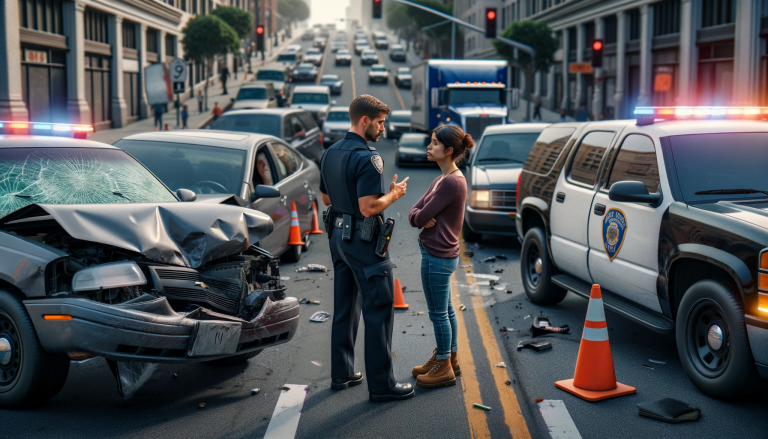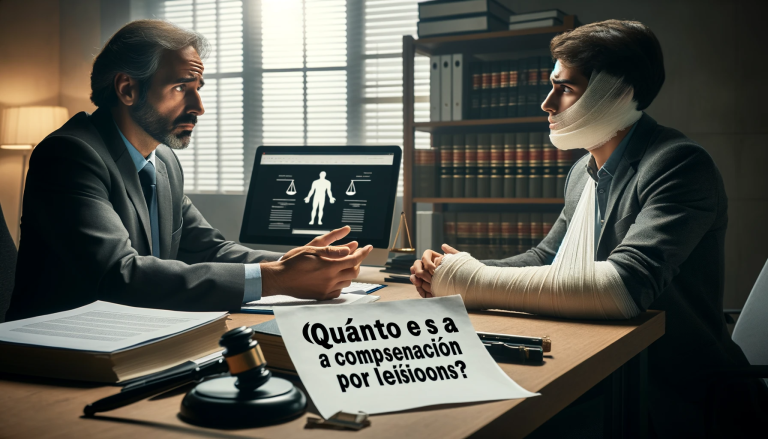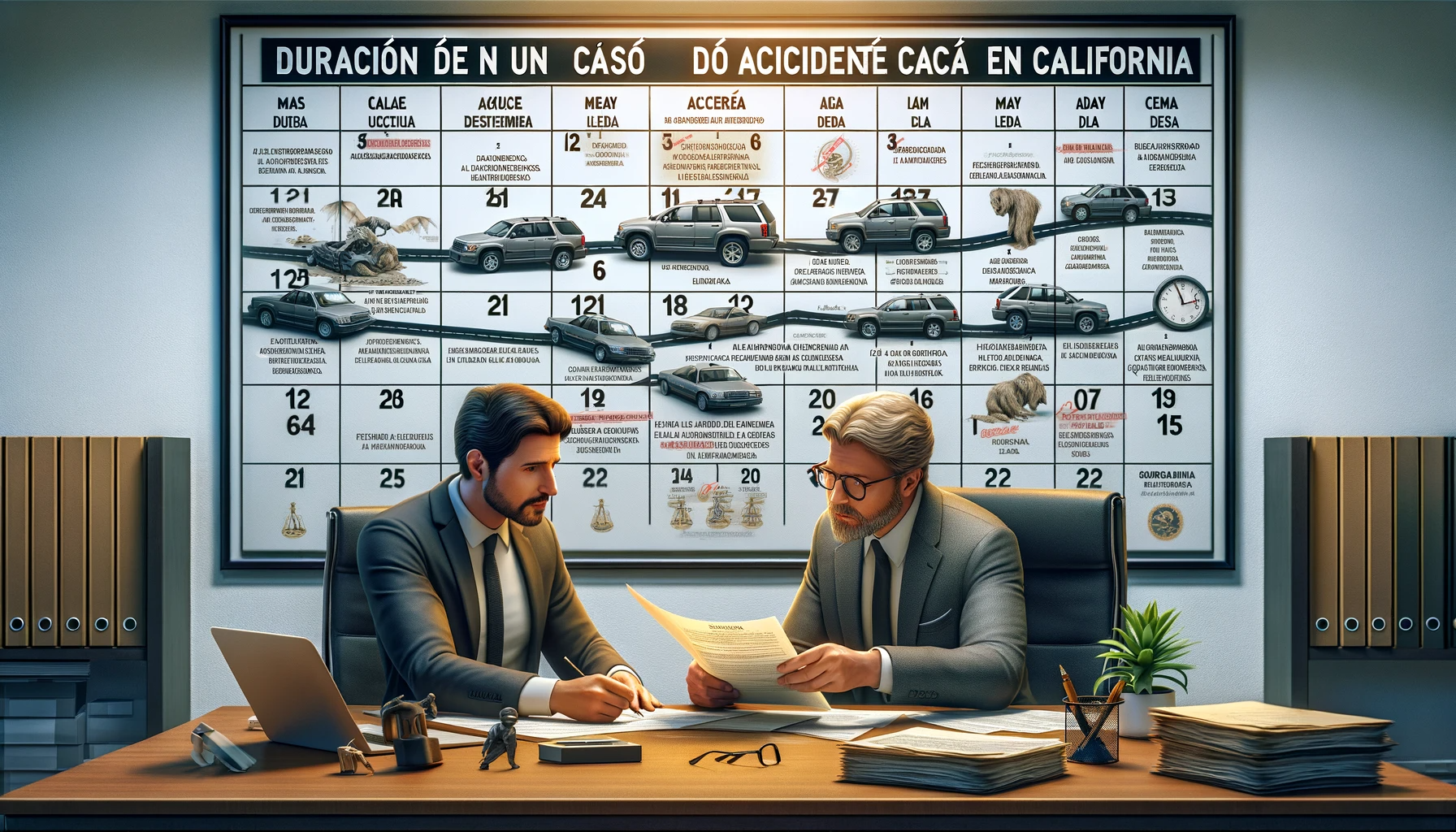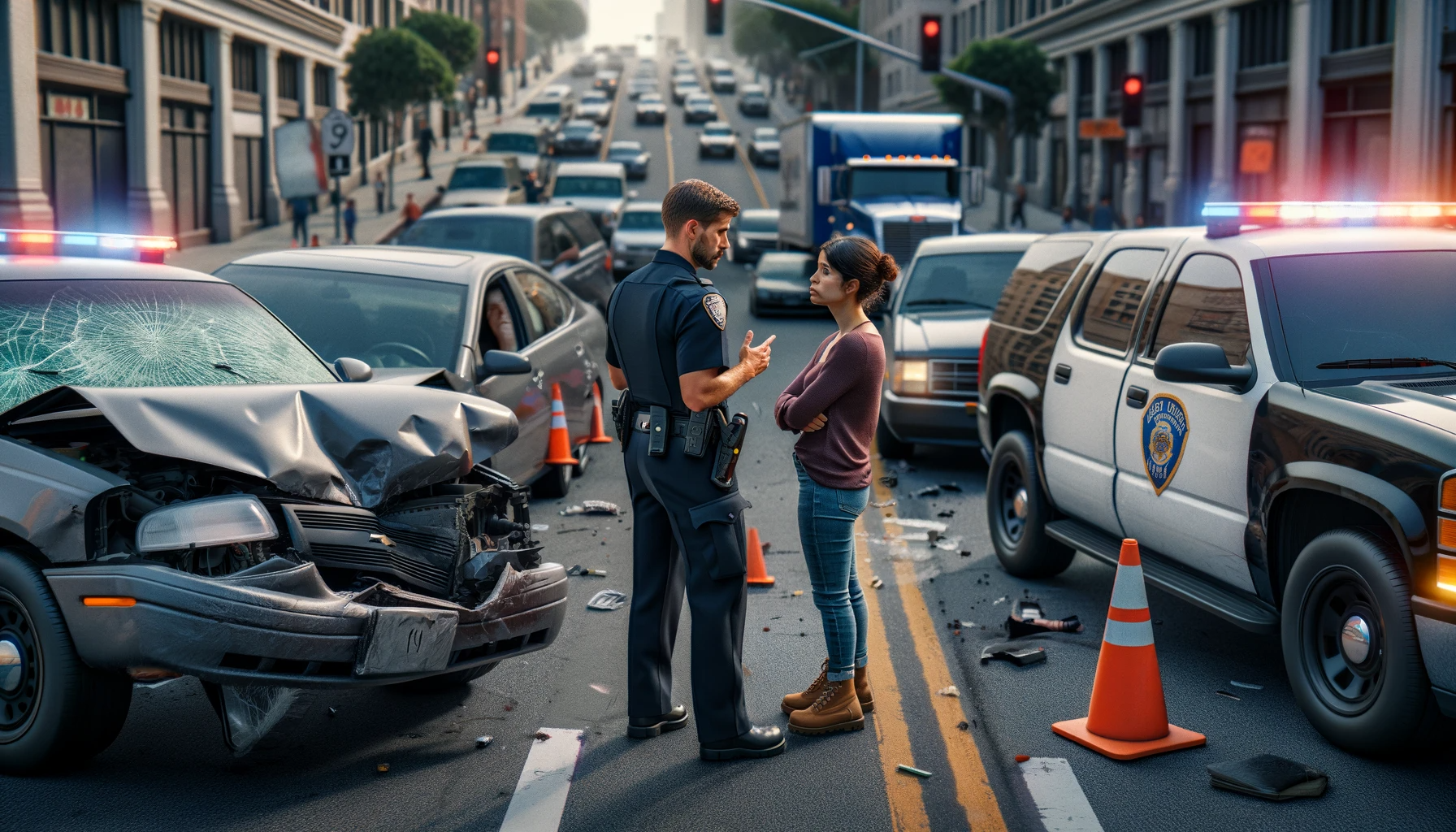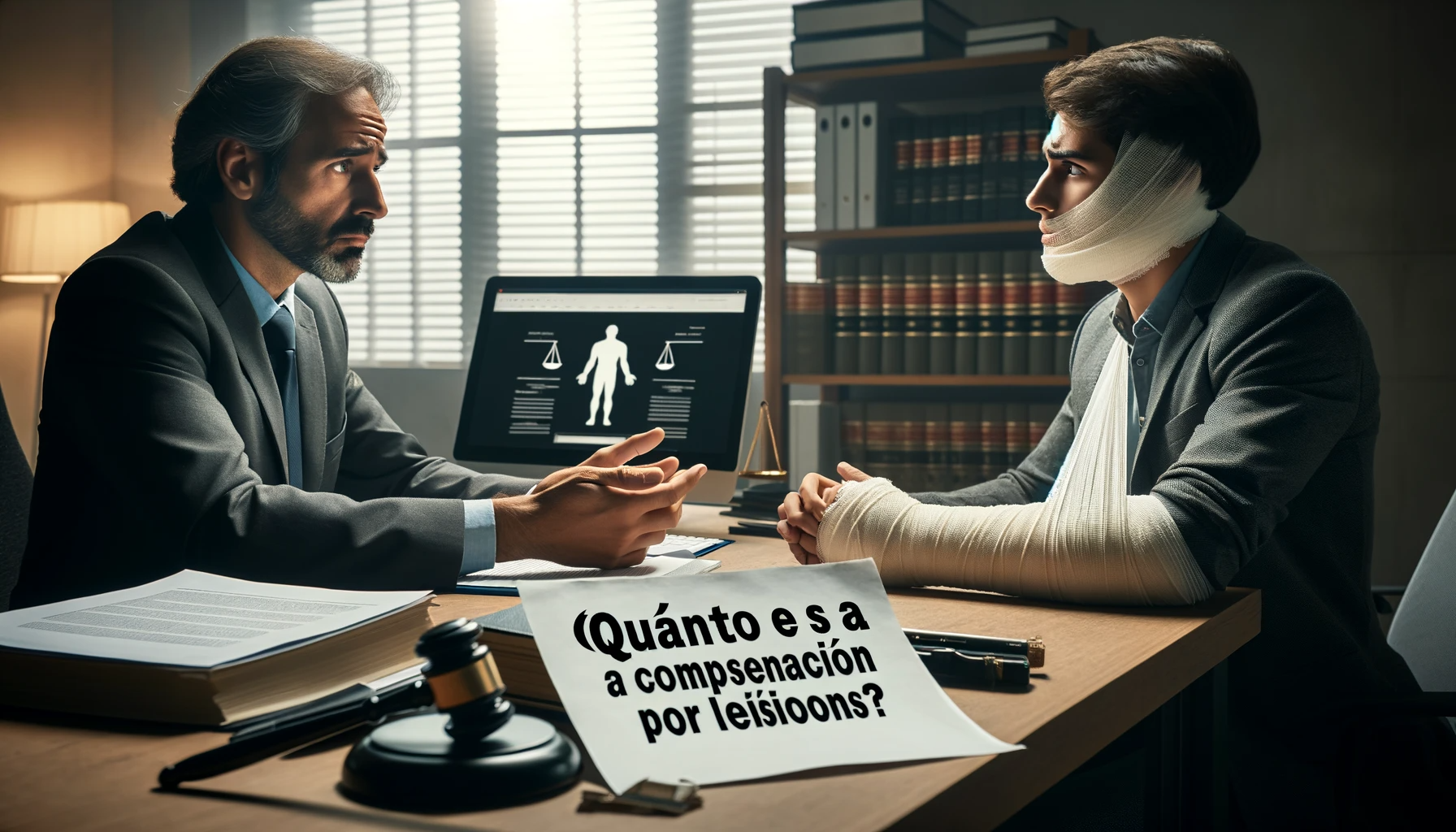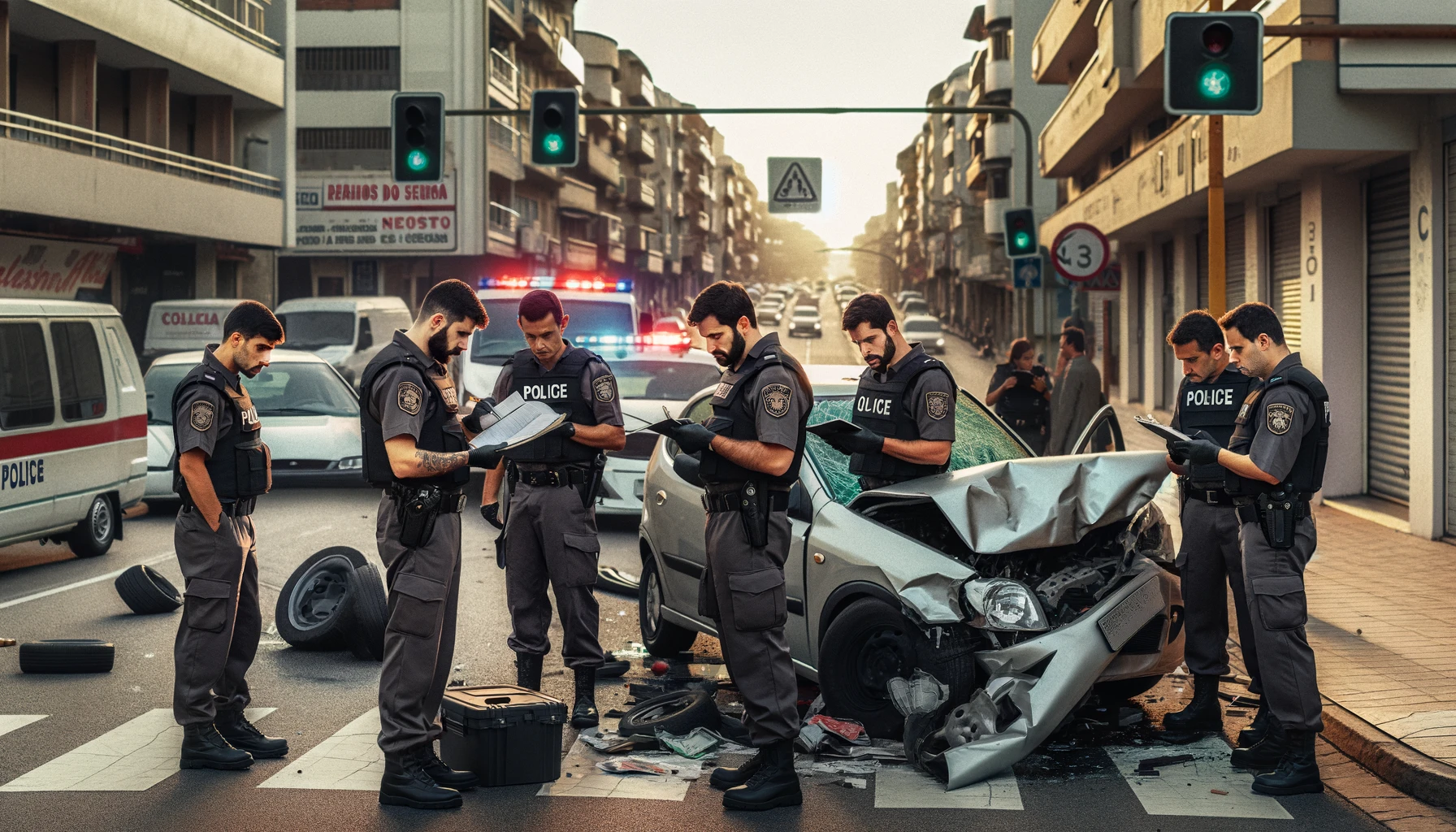Understanding the Car Accident Case Process in California
Initial Steps After a Car Accident in California
After a car accident in California, the immediate steps include reporting the accident to the police and informing your insurance company. Documentation like a police report, photographs, medical reports, and witness statements are essential. If injuries are involved, the first priority is to seek the necessary medical care.

Filing a Car Accident Claim
Once the initial measures are taken, the individual can proceed to file a car accident claim. In California, the statute of limitations for personal injury cases is two years from the date of the accident. However, property damage claims must be filed within three years. This claim is generally filed with the at-fault party’s insurance company and outlines the damages incurred.
Determining Fault and Liability
Under California’s comparative negligence law, liability can be shared among parties involved in the accident. Each party’s liability is determined by their degree of fault. Thus, damages are divided according to each party's percentage of fault. Investigation and negotiation between insurance companies usually determine these percentages.
Settlement Negotiations
After filing a claim, settlement negotiations occur between the injured party’s lawyer and the insurance company. The purpose is to agree on a fair compensation amount for the damages. If an agreement can't be reached, the case may proceed to court.
Lawsuit and Court Proceedings
When negotiations fail or are not satisfactory, a lawsuit may be initiated. In California, civil suits follow a certain process, starting with filing a complaint, then discovery where evidence is exchanged and examined, followed by pre-trial motions and finally trial. It is important to remember that most car accident cases in California are settled before reaching this stage.
Initial Steps: Reporting and Documenting the Accident
Alerting the Authorities
The first step after a car accident is to contact the authorities immediately. In California, if any party is injured or any vehicle has suffered property damage above $1,000, law enforcement must be notified. They will create a police report of the incident which will be crucial for later stages of your car accident case.
Gathering Crucial Information
After ensuring everyone's safety and informing the authorities, gather as much evidence as possible. Verifiable information such as the names, contact details, license plates, and insurance information of all parties involved should be collected. If there were witnesses, try to obtain their contact details as well. Document the scene by taking photographs of the vehicles, any visible injuries, traffic signs, road conditions, and any other physical evidence that may convey the circumstances leading to the accident.
Documenting Medical Treatment
Seek immediate medical attention after an accident, even if you don't initially feel or see any physical injuries. Internal injuries or pain may surface hours or days later. Keep meticulous records of all medical visits, diagnoses, treatments, prescriptions, and any related bills. This documentation can help substantiate your claim and establish a clear link between the accident and your injuries.
Reporting to the Insurance Company
Report the accident to your insurance company as soon as feasible. The sooner they're informed, the sooner they can start processing the claim. Be truthful but avoid speculating about fault or responsibility. It’s advisable to only share basic information such as where and when the accident happened, and who was involved. Detailed facts and liability aspects are best shared after seeking legal advice.
Seeking Legal Counsel
Lastly, contacting a seasoned car accident attorney can significantly impact the outcome of your case. An attorney will guide you through California's complex legal system, liaise with insurance companies, and ensure that your rights are protected. Early legal advice can help prevent potentially damaging slip-ups in the reporting and documenting stage of your case.
Insurance Claim Procedure: Time Frame and Resolution
First Step: Reporting the Accident
In California, it is required by law to report a car accident to your insurance company as soon as possible, usually within 24 hours. This is the beginning of your insurance claim process. The insurer will provide you with a claim number, which is a unique identifier for your case.
The Investigation Period
Once the car accident has been reported, the insurance company will launch an investigation into the incident. This process can take anywhere from a few days to several weeks depending on the complexity of the accident. The purpose of the investigation is to determine who was at fault, appraise the damage to vehicles and properties, and evaluate any injuries sustained.
Settlement Negotiations
Following the conclusion of the investigation, settlement negotiations begin. It is during this phase that the time frame can significantly vary. Factors such as the severity of the injuries, the clarity of fault, and the willingness of parties to reach a fair agreement can cause the duration to range from a few weeks to several months.
Filing a Lawsuit
If the claim cannot be settled through negotiation, the injured party may decide to file a lawsuit. Once a lawsuit is filed, the litigation process begins which adds to the overall timeframe. It can take anywhere from several months to a few years to resolve depending upon the complexity of the case and the court's schedule.
Receiving Your Payout
After a settlement is reached or a verdict is delivered in court, the insurance company will issue payment. Typically, this process takes relatively less time, usually within 30 days. However, the time can extend if there are any disputes regarding the payment terms.
While it is important to remember that each car accident case is unique with its own set of variables, these steps provide a general guide to understanding the process, timeframe, and resolution of an insurance claim in California.
Filing a Lawsuit: When is it Necessary?
Understanding the Need for Legal Action
In many cases, car accident disputes are settled outside of court. Insurance companies often undertake the task of addressing the financial implications of the accident, including vehicle repairs and medical expenses. However, when these out-of-court settlements do not fully cover all the losses, or when liability is in question, it may be necessary to resort to a lawsuit.
Insufficient Compensation from Insurance Companies
Insurance payouts can sometimes fall short of covering the total costs incurred after an accident. This can include medical bills, vehicle damage, loss of earnings due to inability to work, and the emotional distress suffered. If you believe you have not received adequate compensation to cover these losses, filing a lawsuit might be your next step.
Disputes Over Liability
There may be instances when the fault over the car accident becomes a point of contention. The other party involved in the accident, or their respective insurance company, may refute liability, leaving you uncompensated. In such situations, taking the case to court could be imperative to establish responsibility and secure due compensation.
Statute of Limitations
In California, you must file a lawsuit within two years from the date of a car accident. If a government entity had any part in causing the accident, however, the claim must be made within six months. Keeping these deadlines in mind is vital as failure to file within the prescribed time frame can result in a loss of right to recover damages.
Filing a Lawsuit: A Strategic Decision
Filing a lawsuit isn’t just about being compensated; it's also about holding the responsible party accountable for their actions. It’s a strategic decision that should be considered carefully with the assistance of a legal professional who has experience in personal injury lawsuits. The process of filing and pursuing resolution via court can be time-consuming and stressful. Therefore, ensure that your decision to file a lawsuit is motivated by concrete reasons, rather than mere frustration or dissatisfaction with the initial settlement offer.
Pre-trial Proceedings: Discovery and Mediation
Understanding Discovery Stage
The discovery stage starts following the filing and response of the car accident complaint. This phase enables both parties to obtain pertinent information from one another concerning the accident. Typical discovery methods include depositions, interrogatories, requests for admission, and requests for production of documents. Each party may inquire about the other's version of events, the extent of injuries, lost wages, etc. This process is crucial as it helps build a foundation for the lawsuit, uncovering evidence, and identifying strengths and weaknesses of the case.
The Role of Depositions and Interrogatories
Depositions refer to an out-of-court sworn testimony of a witness which can be used in court at a later time. Both parties' attorneys have the opportunity to ask questions and the responses are recorded by a court reporter. This can help to clarify the facts of the accident and determine the credibility of the witnesses.
Interrogatories are written questions sent between parties that must be answered under oath. These questions typically ask about the specifics of the accident, details of injuries sustained, or any other relevant details. Responses to these questions can provide very important insights into the case.
Admission Requests and Document Production
Requests for admission demand that the opponent either admit or deny specific statements about the case. Generally, these questions are phrased in a yes/no format. This tool can streamline the trial by setting aside undisputed facts.
Requests for production of documents are requests to produce documents related to the accident such as medical records, car repair receipts, police reports, photographs, and more. These documents can serve as valuable pieces of evidence in the lawsuit.
Mediation Process
Mediation is often recommended or sometimes required before going to trial. It is a less formal dispute resolution process where a neutral third-party (mediator) aids the parties in negotiating a potential settlement. Mediators don't make decisions, but assist the involved parties in understanding each other’s positions and explore potential resolutions. Mediation can help save time, legal costs, and often allows the parties to come to a resolution amicably. If an agreement is reached, it will be put into writing and becomes legally binding. If no agreement is made, the case continues towards trial.
Trial Phase: How Long Can it Last?
The Initiation of the Trial Phase
In California, once a car accident case has passed through the discovery and negotiation phases, it moves into the trial phase. This is typically initiated only after attempts at reaching a settlement are unsuccessful. The trial phase begins when the plaintiff files a Request for Trial. It's important to note that this doesn't mean the trial commences immediately - instead, it sets things in motion towards a court hearing.
The Timeline for the Trial Phase
The duration of the trial phase varies for every car accident case. On average, it can last anywhere from a few days to several weeks, depending on the complexity of the case and the availability of all parties involved. However, before the trial starts, there is usually a period of around 12 to 18 months from the filing of the initial complaint. This waiting period is often due to backlogs in the court system and scheduling conflicts.
Factors Influencing the Length of the Trial Phase
Several factors can either shorten or extend the length of the trial phase in a car accident case. Key factors include the complexity of the issues being disputed, the number of witnesses involved, and the availability of the judge and attorneys. Other considerations include the willingness of both parties to adjust their schedules and the readiness of all evidence and testimonies.
Unexpected Delays During Trials
Unexpected delays can also extend the length of the trial phase. These can occur due to unforeseen circumstances such as illness, emergencies, or changes in the availability of key individuals in the case. Should these instances occur, the trial can be rescheduled, leading to further prolongation of the case.
Courtroom Procedures and Their Duration
Lastly, courtroom procedures can also influence the length of time a trial phase can last. Each day at trial will likely consist of opening statements, presentation of evidence, witness testimonies, cross-examinations, closing arguments, jury instructions, and potentially, the jury’s deliberation and verdict. All these steps are time-consuming and can extend the trial phase in a car accident case.

Appeals and Settlements: Final Stages of a Car Accident Case
Understanding the Appeals Process
The appeals process commences once a decision has been reached in a car accident case. If one party is not satisfied with the verdict, they might use this procedure to challenge the outcome in a higher court. It's essential to understand that an appeal does not represent a fresh trial but rather a review of the previous legal proceedings for potential errors that could affect the outcome. An appellate court, upon evaluating the case, has the power to affirm, reverse, or modify the earlier judgement.
Navigating through Settlement Negotiations
On the other hand, most car accident cases in California never reach a court trial; instead, they are resolved through settlement negotiations. This stage of a car accident case involves the insurance company and the plaintiff negotiating an agreeable compensation amount to cover damages such as medical bills, loss of earnings, and pain and suffering. Many factors can influence the length and outcome of these discussions, including the nature of the injuries sustained, the clarity of fault, and the policy limits of the insurance involved.
The Role of Mediation in Resolving Disputes
Mediation is often used to facilitate the settlement process. In this scenario, a neutral third-party mediator assists the involved parties in reaching a mutually satisfactory agreement. The mediator does not make decisions but helps guide conversations and negotiations. Although not always successful, mediation can be an efficient and cost-effective way to resolve a dispute without further court intervention.
Finalizing the Settlement
Once a settlement agreement is reached, it will be followed by the drafting and signing of a settlement agreement document. This legal document outlines the terms and details of the agreement, including the compensation amount and conditions of the payout. Upon its execution, the claimant will typically receive the settlement funds within a few weeks. Understanding these final stages of a car accident case can prepare individuals for the potentially complex procedures, helping them to effectively navigate their case and receive the compensation they deserve.
Conclusion
In California, the duration of a car accident case can be quite unpredictable and varies widely based on several crucial factors. It's important to bear in mind that no two cases are alike, and as such, the timeline for resolution can differ significantly from one situation to another.
For some individuals, the fortunate outcome may involve a relatively swift conclusion to their car accident case. This often occurs when the parties involved can come to a mutual agreement through settlement negotiations. These settlements can save substantial time and resources, allowing everyone to move forward without the protracted litigation process.
However, it's equally important to acknowledge that not all cases follow this expedited route. Some car accident cases may evolve into complex legal battles that persist for several months, and in certain instances, even extend into years. This typically happens when parties are unable to reach a settlement and must resort to a trial to determine liability and compensation.
Given this inherent variability, it is absolutely crucial to approach your car accident case with a degree of patience and realism. To navigate this intricate legal landscape effectively, it's strongly advisable to consult with an experienced attorney who specializes in personal injury cases. An experienced attorney can provide invaluable guidance and tailored advice that takes into account the specific circumstances of your case. They can help you understand the intricacies of California's legal system, manage your expectations, and work diligently to pursue the best possible outcome on your behalf.
Look for an attorney who has the right legal resources for your legal needs.
Contact us here on the
Warmuth Law website or through our hotline 888-517-9888.
Frequently Asked Questions (FAQ's)
How long does the average car accident case last in California?
The average duration of a car accident case in California is influenced by a multitude of factors. Typically, these cases can range from a few months to several years. The specific timeline depends on variables such as the complexity of the case, the willingness of parties to negotiate, the court's schedule, and the extent of injuries and damages involved. Simpler cases with clear liability and minimal disputes tend to resolve more quickly, while complex cases with multiple parties or severe injuries may take considerably longer.
Can I speed up the process of my car accident case in California?
While some aspects of the case duration are beyond your control, there are steps you can take to expedite the process. First and foremost, having a skilled and experienced attorney by your side can significantly accelerate the legal proceedings. Additionally, being open to settlement negotiations and actively working towards a fair resolution can help resolve the case more swiftly. Collaborating with your attorney and maintaining open communication throughout the process can also contribute to a faster resolution.
What should I do if I'm unhappy with the verdict in my car accident case?
If you find yourself dissatisfied with the verdict in your car accident case, you may have the option to appeal the decision. An appeal involves taking your case to a higher court and presenting arguments that challenge the legal basis of the verdict. However, it's important to note that the appeals process can significantly prolong the legal proceedings, so it should be approached with careful consideration and guidance from your attorney.
How do court dockets affect my car accident case duration?
Court dockets play a crucial role in determining the timeline of your car accident case. The court's schedule and backlog can impact when your case will be scheduled for hearings and trials. Courts often have a limited number of available time slots, and your case's position on the docket can influence how quickly it progresses. While you can't control court schedules, your attorney can help you navigate these logistical challenges to minimize delays.
Is it common for car accident cases to settle out of court in California?
Yes, it is relatively common for car accident cases in California to be resolved through out-of-court settlements. Settlements are often a preferred route because they save both time and legal expenses for all parties involved. They allow the parties to negotiate and agree on a compensation amount without the need for a trial. Many car accident cases find resolution through settlements, especially when liability is clear, and both sides are willing to reach a mutually acceptable agreement.




